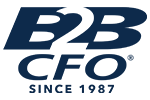
Raising Operating Capital Part 1 Chapter 4
Posted on March 31, 2020 by Terry Eve
The theme of my Blogs for this year is what I would include in a book about small business finance and accounting. This month will be the first of several articles on raising funds for the Small Business.
Remember, Never! Ever! Run Out of Cash, NO MATTER WHAT! But that is often easier said than done, so this month and for the next couple of months we will take a look at sources of capital and what is needed to source that capital.
Sources of Capital
There are basically 3 sources of operating capital for a business.
- Debt
- Equity
- Owner Investment
- Outside Investment
- Internal Operations
Interestingly enough, the starting point of raising funds from any of these sources is the same, the Company Business Plan.
Business Plan
Depending on which of the options are selected, the content, detail and supporting information can vary, but the basic elements should contain at least the following components:
- Goal Clarity – This can be a topic by itself (and has been in past blogs). The company’s goals need to be clearly articulated and communicated along with the same information for the owner’(s) goals. Make sure they are congruent!
- A brief outline of the company’s products and services, marketing strategy, and other information that differentiates the company from its competitors. In short an executive summary that includes the company’s competitive advantage.
- A SWOT analysis outlining the company’s Strengths & Weaknesses (internal focus) and Opportunities and Threats (external focus)
- Supporting financial exhibits showing anticipated revenues and expenses along with a forecasted balance sheet and cash flow statement. This shows how much money is needed to operate the business in accordance with the business plan.
- Specifically what you plan to do with the funds you are trying to attract.
The cash flow statement shows the source and consumption of funds from operations, financing activities (borrowing and equity raises and repayments, distributions and dividend payments) and investing activities (predominately the purchase and sale of long-term assets including both fixed assets and intellectual property).
OK, so the next question you ask is why do you need a business plan to raise funds from internal operations, owner investment or perhaps even borrow from a bank? Good question, I am glad you asked!
If funds are coming solely from internal operations, you need to determine if they are sufficient to drive the growth, profitability and cash flow required to meet the stated goals and objectives of the organization. So what are your planned goals and how much money will it take to reach them? Are the anticipated gross and net margins sufficient to attain those goals? How do you know if you don’t lay out the plan and related financial forecasts? Tied to that, how will the owner know if he has the resources needed to fund that activity personally?
Accordingly, the Business plan and associated financial projections are an essential start of running the finances of the business, determining the cash requirements and sourcing funds, regardless of the sources.
Next month we will discuss outside sources of capital from lenders and investors.

